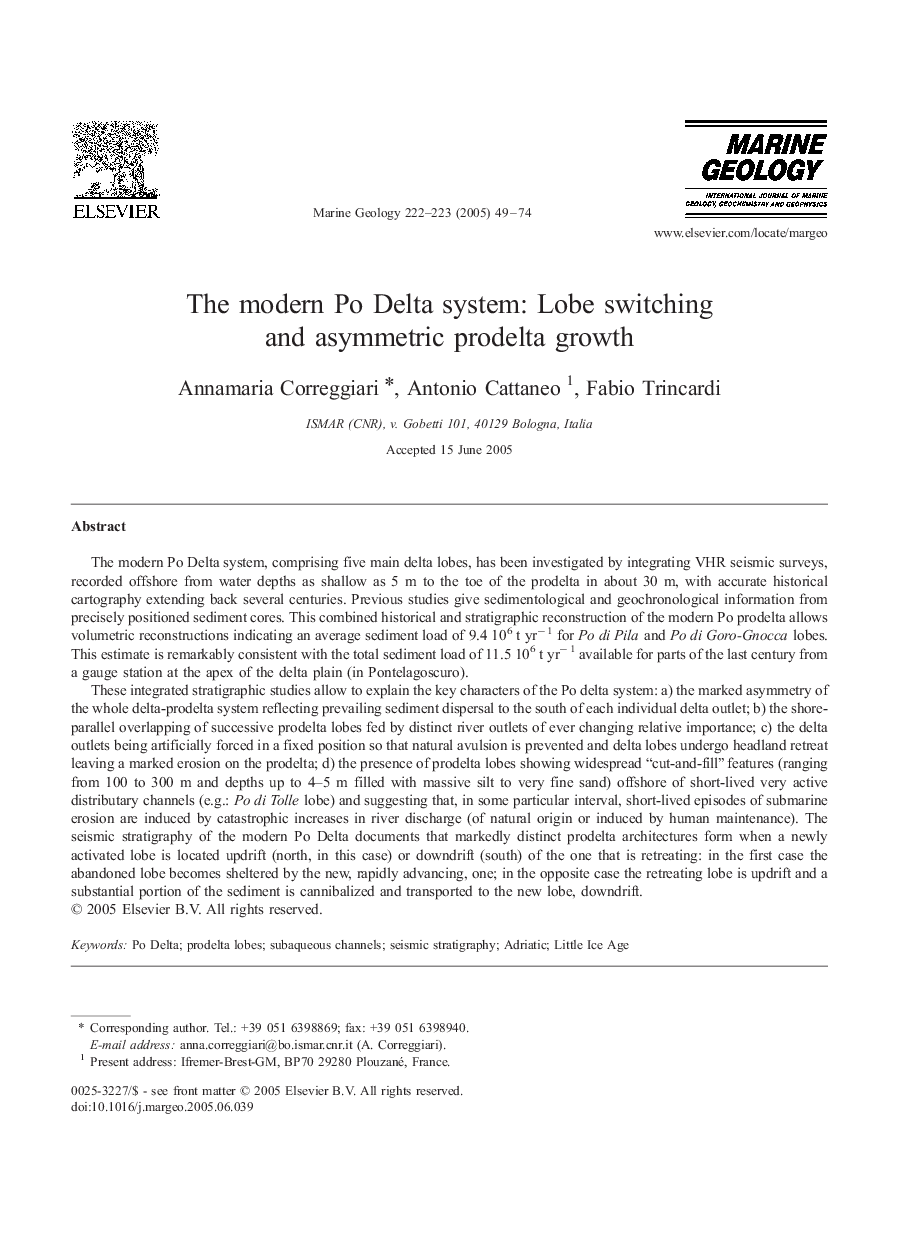| Article ID | Journal | Published Year | Pages | File Type |
|---|---|---|---|---|
| 9532456 | Marine Geology | 2005 | 26 Pages |
Abstract
These integrated stratigraphic studies allow to explain the key characters of the Po delta system: a) the marked asymmetry of the whole delta-prodelta system reflecting prevailing sediment dispersal to the south of each individual delta outlet; b) the shore-parallel overlapping of successive prodelta lobes fed by distinct river outlets of ever changing relative importance; c) the delta outlets being artificially forced in a fixed position so that natural avulsion is prevented and delta lobes undergo headland retreat leaving a marked erosion on the prodelta; d) the presence of prodelta lobes showing widespread “cut-and-fill” features (ranging from 100 to 300 m and depths up to 4-5 m filled with massive silt to very fine sand) offshore of short-lived very active distributary channels (e.g.: Po di Tolle lobe) and suggesting that, in some particular interval, short-lived episodes of submarine erosion are induced by catastrophic increases in river discharge (of natural origin or induced by human maintenance). The seismic stratigraphy of the modern Po Delta documents that markedly distinct prodelta architectures form when a newly activated lobe is located updrift (north, in this case) or downdrift (south) of the one that is retreating: in the first case the abandoned lobe becomes sheltered by the new, rapidly advancing, one; in the opposite case the retreating lobe is updrift and a substantial portion of the sediment is cannibalized and transported to the new lobe, downdrift.
Related Topics
Physical Sciences and Engineering
Earth and Planetary Sciences
Geochemistry and Petrology
Authors
Annamaria Correggiari, Antonio Cattaneo, Fabio Trincardi,
